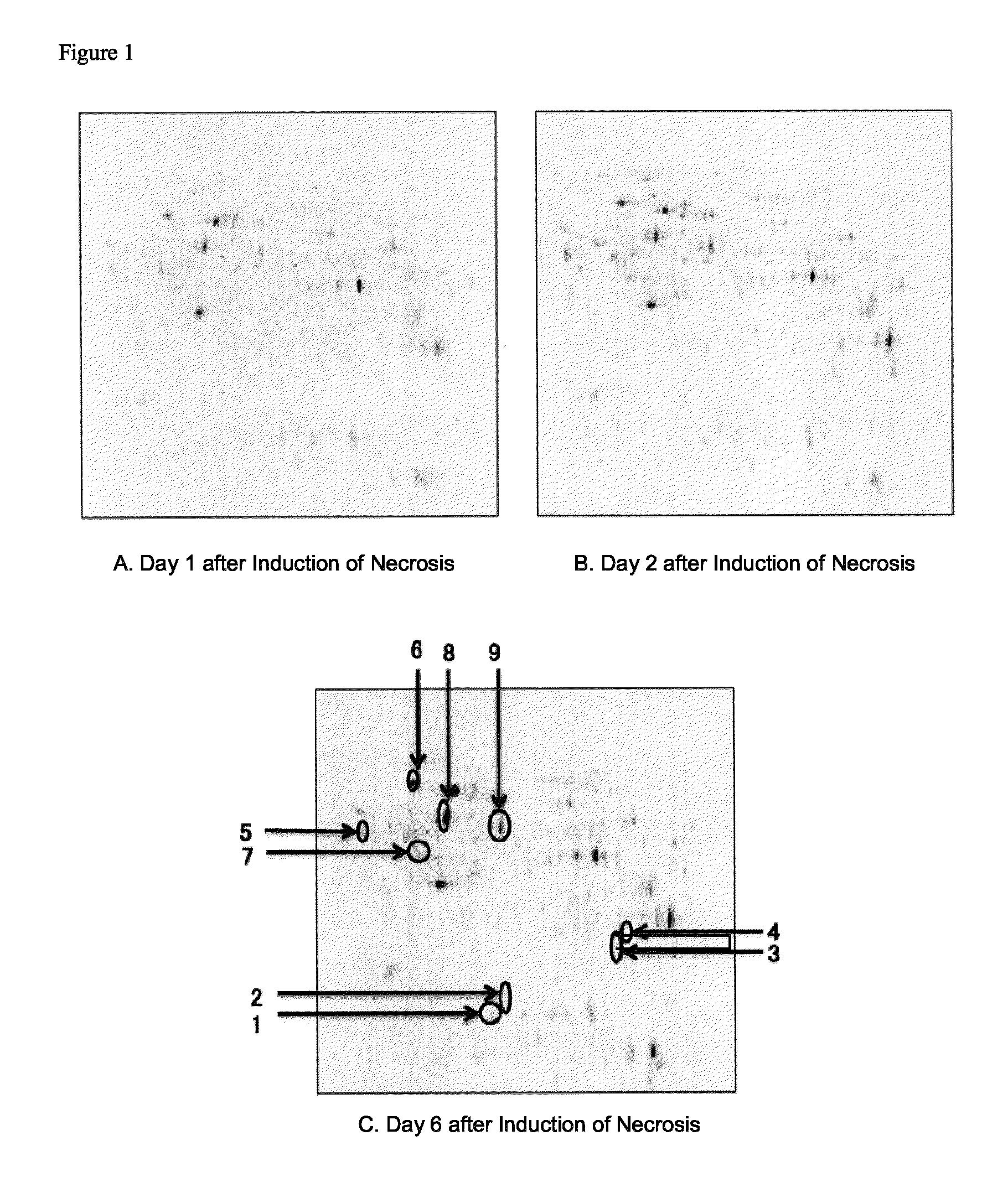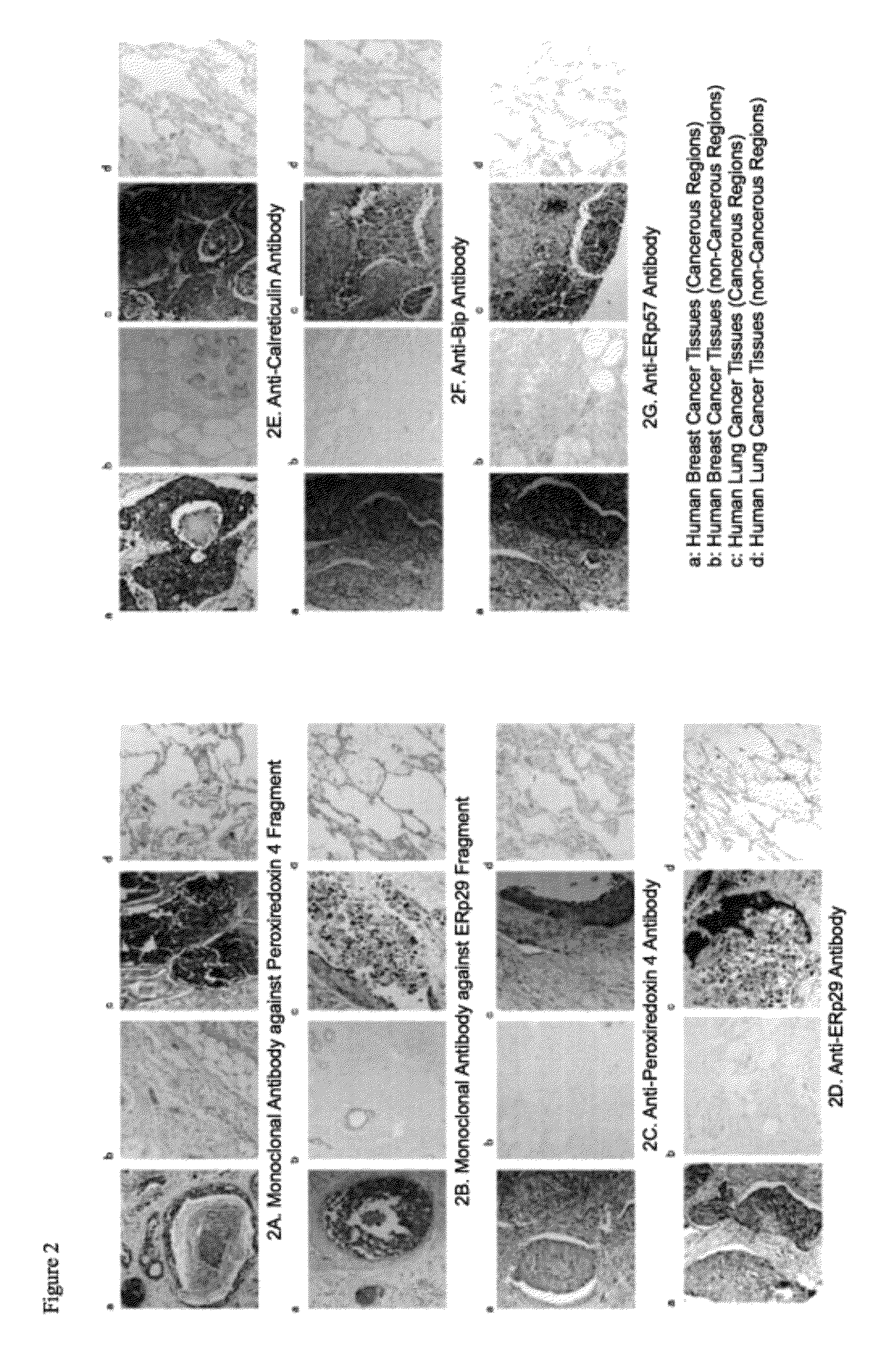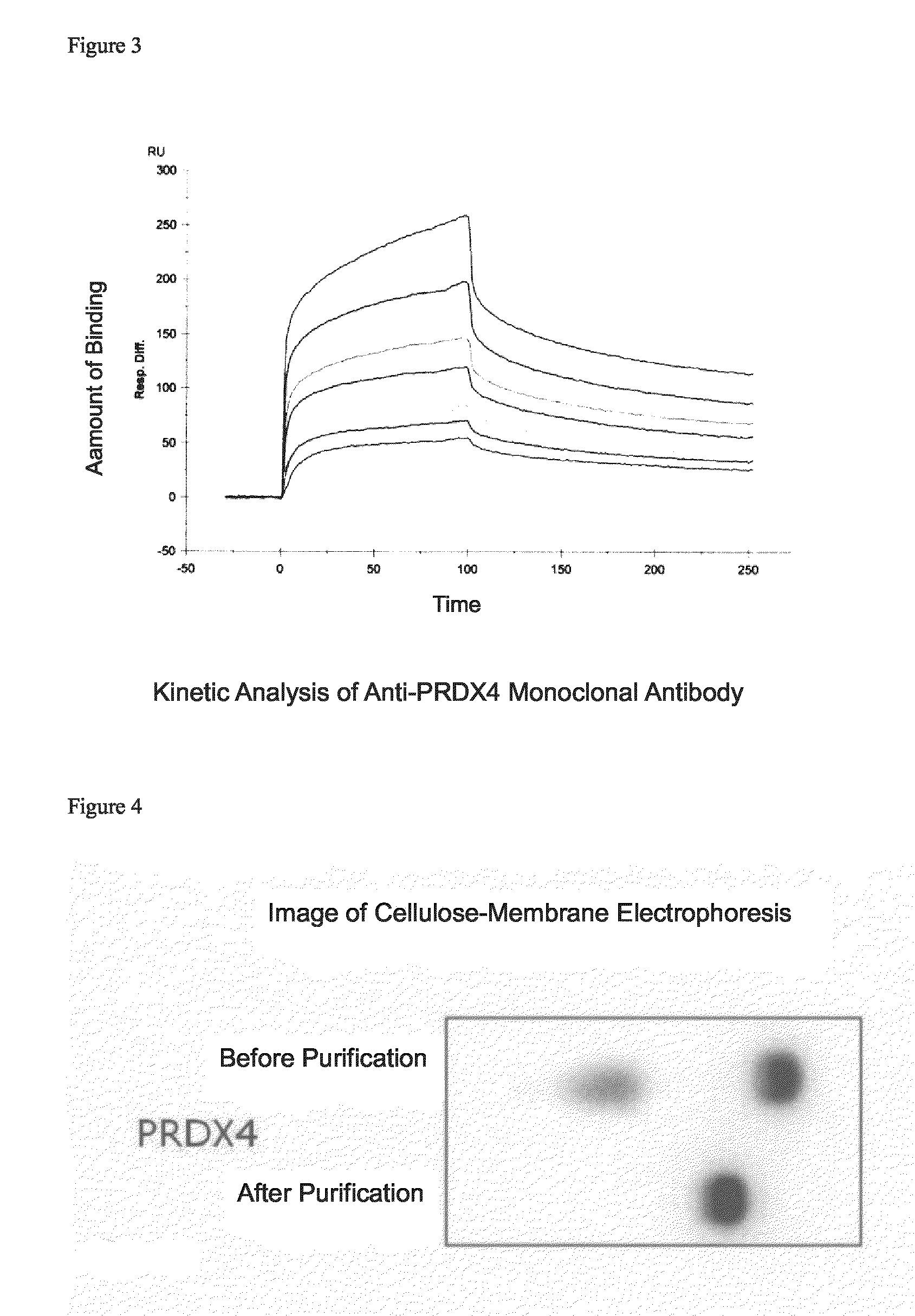Monoclonal antibody against necrosis marker PRDX4 and use thereof
a monoclonal antibody and necrosis technology, applied in the field of new necrosis markers, can solve the problems of limited prior art techniques for detecting necrosis focus biomarkers
- Summary
- Abstract
- Description
- Claims
- Application Information
AI Technical Summary
Benefits of technology
Problems solved by technology
Method used
Image
Examples
example 1
Preparation of Necrotic Focus Cell Model System
[0076]The method of the present invention requires a cell in which necrosis is induced as a cell model forming a focus of necrosis. Therefore, necrosis was induced in the cells of cervical cancer cell strain, HeLa cells, to prepare a cell model forming a focus of necrosis. The HeLa cells are generally adhesive cells, and 2×105 to 1×106 cells are cultured on a 10-cm2 petri dish in a scaffold-dependent manner. In usual culture, they are cultured at 37° C. and a cell density of 2×104 to 1×105 cells / ml in 10 ml of blood serum-containing DMEM medium (Dulbecco's modified Eagle medium) under a gas phase of 5% CO2 and 95% air and saturated humidity. The HeLa cells have high proliferation potency, and in the highly nutritious blood serum-containing DMEM medium, they proliferate to reach confluent in a 10-cm2 petri dish within two to three days. Since the HeLa cells are cells of a cancer cell line, even if the cells reach confluent in a petri dis...
example 2
Identification of Marker Molecules Specific to Focus of Necrosis
[0085]2.1 Preparation of Cell Extracts
[0086]The HeLa cells on the day 1 to day 6 after the induction of necrosis in the DMEM medium containing 10% FCS and the HeLa cells cultured in the usual manner obtained in Example 1 were collected, and washed twice with ice-cooling PBS(−). An ice-cooled solubilization buffer (20 mM Tris-HCl (pH 7.5), 150 mM NaCl, 1 mM EDTA, 1% NP-40) in a volume of 500 to 1,000 μl was added to the cells to suspend the cells, and the suspension was transferred to a 1.5-ml tube. The soluble fraction of the cells was extracted with rotating the tube at 4° C. for 30 minutes, and centrifuged at 15,000 rpm for 15 minutes, and the supernatant was collected as a cell extract. The collected cell extract was purified by using 2D-Clean up kit (80-6484-51, Amersham) according to the attached protocol, and dissolved in an appropriate volume of a lysis buffer (30 mM Tris (pH 8.5) 7 M urea, 2 M thiourea, 4% CHAPS...
example 3
Preparation of Monoclonal Antibodies
[0109]3.1 Sensitization of Immunized Animal and Cell Fusion
[0110]For the peroxiredoxin 4 fragment and the ERp29 fragment among the proteins identified as necrotic focus-specific markers, mouse monoclonal antibodies that could recognize each sequence were prepared on the basis of the N-terminal amino acid sequences identified in Example 2.
[0111]A peptide of 10 residues consisting of the aforementioned N-terminus 9 amino acid residues of the peroxiredoxin 4 fragment or the ERp29 fragment and a cysteine residue added to the C-terminus of the foregoing residues for binding with a carrier polymer (KLH) was chemically synthesized in a conventional manner in an amount of about 10 mg, and purified by HPLC, and the purified peptide was used as an antigen peptide. The antigen peptide was crosslinked with KLH in a conventional manner, and mixed with an equal amount of the Freund's complete adjuvant (RM606-1, Mitsubishi Chemical Iatron), and the mixture was e...
PUM
 Login to View More
Login to View More Abstract
Description
Claims
Application Information
 Login to View More
Login to View More - R&D
- Intellectual Property
- Life Sciences
- Materials
- Tech Scout
- Unparalleled Data Quality
- Higher Quality Content
- 60% Fewer Hallucinations
Browse by: Latest US Patents, China's latest patents, Technical Efficacy Thesaurus, Application Domain, Technology Topic, Popular Technical Reports.
© 2025 PatSnap. All rights reserved.Legal|Privacy policy|Modern Slavery Act Transparency Statement|Sitemap|About US| Contact US: help@patsnap.com



